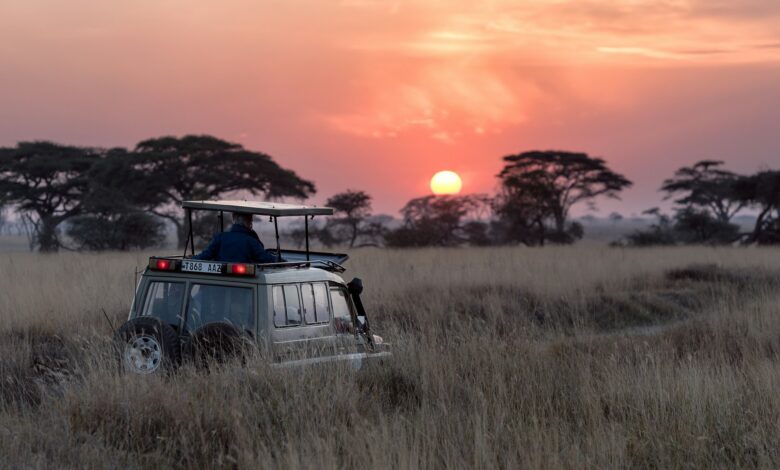The Impact of Tourism on Kenyan Wildlife

Kenya, known for its breathtaking landscapes and diverse wildlife, has long been a magnet for tourists seeking an authentic African experience. The country’s vast savannas, rich biodiversity, and iconic national parks such as Maasai Mara, Amboseli, and Tsavo attract millions of visitors annually. Safari tourism, in particular, is a significant draw, with numerous Safari Tour operators in Kenya offering a variety of wildlife experiences. However, the influx of tourists poses both opportunities and challenges for Kenya’s wildlife. This article explores the multifaceted impact of tourism on Kenyan wildlife, highlighting the role of Safari Tour operators in Kenya.
Economic Benefits of Tourism
Revenue Generation
Tourism is a critical pillar of Kenya’s economy, contributing significantly to GDP and providing employment to thousands of people. Safari tourism, in particular, plays a crucial role in revenue generation. Tourists pay for park entry fees, accommodation, guided tours, and other services, injecting substantial funds into the local and national economy. These revenues are vital for funding conservation efforts and maintaining the infrastructure of national parks and reserves.
Employment Opportunities
The tourism industry creates numerous job opportunities for local communities. Safari Tour operators in Kenya employ guides, drivers, hospitality staff, and other support personnel. This employment not only provides a livelihood for many families but also fosters a sense of stewardship among locals towards their natural heritage. When communities benefit directly from tourism, they are more likely to support conservation efforts.
Environmental Impact
Habitat Disturbance
While tourism brings economic benefits, it also poses significant environmental challenges. One of the primary concerns is habitat disturbance. The presence of large numbers of tourists can disrupt the natural behavior of wildlife. Vehicles, noise, and human activities can stress animals, leading them to alter their feeding, breeding, and migration patterns. For example, in popular parks like Maasai Mara, the concentration of safari vehicles around wildlife can become overwhelming, affecting the animals’ ability to hunt or care for their young.
Pollution
Tourism-related pollution is another pressing issue. The influx of tourists often leads to increased waste generation, including plastic bottles, food packaging, and other litter. Improper disposal of waste can degrade the environment and harm wildlife. Moreover, the use of vehicles for game drives contributes to air pollution and soil erosion, further impacting the delicate ecosystems.
Resource Depletion
The demand for resources such as water and fuel increases with tourism. Many safari lodges and camps are located in remote areas with limited access to these resources. Over-extraction of water for tourist facilities can deplete local water sources, affecting both wildlife and local communities. Additionally, the use of firewood for cooking and heating in lodges can lead to deforestation if not managed sustainably.
Conservation Efforts
Funding for Conservation
Despite the environmental challenges, tourism provides crucial funding for conservation initiatives. Revenues from park entry fees and tourism-related activities are often reinvested into conservation projects. These funds support anti-poaching efforts, habitat restoration, and wildlife monitoring programs. For instance, the Kenya Wildlife Service (KWS) relies heavily on tourism revenues to finance its operations, including the protection of endangered species like elephants and rhinos.
Community Involvement
Tourism can also promote community-based conservation. By involving local communities in tourism operations, such as through partnerships with Safari Tour operators in Kenya, there is a direct incentive for communities to protect wildlife. Community conservancies, which are areas managed by local communities for both conservation and sustainable tourism, have been successful in increasing wildlife populations and improving livelihoods.
Education and Awareness
Tourism raises awareness about the importance of wildlife conservation. Visitors often leave with a greater appreciation of the need to protect these natural treasures. Educational programs and guided tours provided by Safari Tour operators in Kenya can enhance visitors’ understanding of the ecological significance of wildlife and the challenges they face. This increased awareness can translate into support for conservation efforts, both locally and globally.
Case Studies
Maasai Mara National Reserve
The Maasai Mara National Reserve is one of Kenya’s most famous wildlife destinations, renowned for the annual wildebeest migration. However, the reserve also illustrates the complex relationship between tourism and wildlife conservation. The high volume of tourists, especially during peak migration season, puts pressure on the environment. Safari Tour operators in Kenya play a crucial role in managing this pressure by adhering to responsible tourism practices, such as limiting vehicle numbers and promoting eco-friendly accommodations.
Amboseli National Park
Amboseli National Park, famous for its large elephant herds and stunning views of Mount Kilimanjaro, has benefited significantly from tourism revenues. These funds have supported various conservation initiatives, including anti-poaching units and community outreach programs. However, the park also faces challenges such as human-wildlife conflict and habitat degradation. Sustainable tourism practices are essential to mitigate these issues and ensure the long-term viability of Amboseli’s wildlife.
Challenges and Solutions
Balancing Tourism and Conservation
One of the primary challenges in wildlife tourism is striking a balance between economic benefits and conservation needs. Uncontrolled tourism can lead to habitat destruction, while too few tourists can result in insufficient funding for conservation. Safari Tour operators in Kenya must navigate this delicate balance by promoting sustainable tourism practices. This includes limiting the number of visitors, using eco-friendly infrastructure, and supporting conservation initiatives financially.
Human-Wildlife Conflict
Human-wildlife conflict is another significant issue exacerbated by tourism. As wildlife habitats shrink and human populations grow, conflicts between people and animals become more frequent. Tourism can exacerbate this problem if not managed properly. For instance, when animals become habituated to humans, they may venture into human settlements, leading to conflicts. Effective management strategies, such as community education and the development of wildlife corridors, are essential to mitigate these conflicts.
Climate Change
Climate change poses a long-term threat to Kenyan wildlife and tourism. Changing weather patterns, increased frequency of droughts, and other climate-related impacts can affect wildlife populations and their habitats. Safari Tour operators in Kenya need to be proactive in addressing these challenges by adopting sustainable practices and supporting climate resilience initiatives. This includes reducing carbon footprints, investing in renewable energy, and promoting conservation efforts that enhance ecosystem resilience.
The Role of Safari Tour Operators in Kenya
Promoting Sustainable Tourism
Safari Tour operators in Kenya have a pivotal role in promoting sustainable tourism. By adopting eco-friendly practices and educating tourists about conservation, they can minimize the negative impact of tourism on wildlife. For example, many operators now offer low-impact safari options, such as walking safaris and eco-friendly lodges. These initiatives not only reduce environmental impact but also provide a more immersive and educational experience for tourists.
Supporting Conservation Initiatives
Many Safari Tour operators in Kenya actively support conservation initiatives. This support can take various forms, such as financial contributions to conservation organizations, participating in wildlife monitoring programs, or facilitating community-based conservation projects. By integrating conservation into their business models, these operators help ensure that tourism benefits both wildlife and local communities.
Educating Tourists
Education is a key component of sustainable tourism. Safari Tour operators in Kenya have the opportunity to educate tourists about the importance of wildlife conservation and responsible tourism practices. This education can occur through guided tours, informational materials, and interactive experiences. By raising awareness, operators can foster a culture of conservation among tourists, encouraging them to support conservation efforts during and after their visit.
Future Prospects
Innovations in Sustainable Tourism
The future of wildlife tourism in Kenya lies in innovation and sustainability. Safari Tour operators in Kenya are increasingly adopting new technologies and practices to enhance sustainability. This includes using electric safari vehicles, implementing waste management systems, and adopting renewable energy sources. These innovations not only reduce environmental impact but also appeal to eco-conscious travelers.
Strengthening Community Partnerships
Strengthening partnerships with local communities is crucial for the future of wildlife tourism in Kenya. By involving communities in tourism planning and operations, Safari Tour operators can ensure that tourism benefits are equitably distributed. Community involvement also enhances conservation efforts, as locals are more likely to protect wildlife when they see tangible benefits. Empowering communities through training, capacity building, and revenue-sharing agreements is essential for sustainable tourism development.
Adapting to Climate Change
Adapting to climate change is a pressing concern for the future of Kenyan wildlife tourism. Safari Tour operators in Kenya must be proactive in addressing climate-related challenges. This includes implementing adaptive management strategies, supporting conservation efforts that enhance ecosystem resilience, and educating tourists about the impacts of climate change on wildlife. By taking a proactive approach, the tourism industry can contribute to the long-term conservation of Kenya’s wildlife.
Conclusion
The impact of tourism on Kenyan wildlife is a complex and multifaceted issue. While tourism provides significant economic benefits and funding for conservation, it also poses environmental challenges that need to be managed carefully. Safari Tour operators in Kenya play a crucial role in balancing these impacts by promoting sustainable tourism practices, supporting conservation initiatives, and educating tourists. By continuing to innovate and strengthen community partnerships, the tourism industry can contribute to the long-term conservation of Kenya’s rich wildlife heritage. As we look to the future, it is essential to prioritize sustainability and resilience to ensure that Kenya’s wildlife thrives for generations to come.



